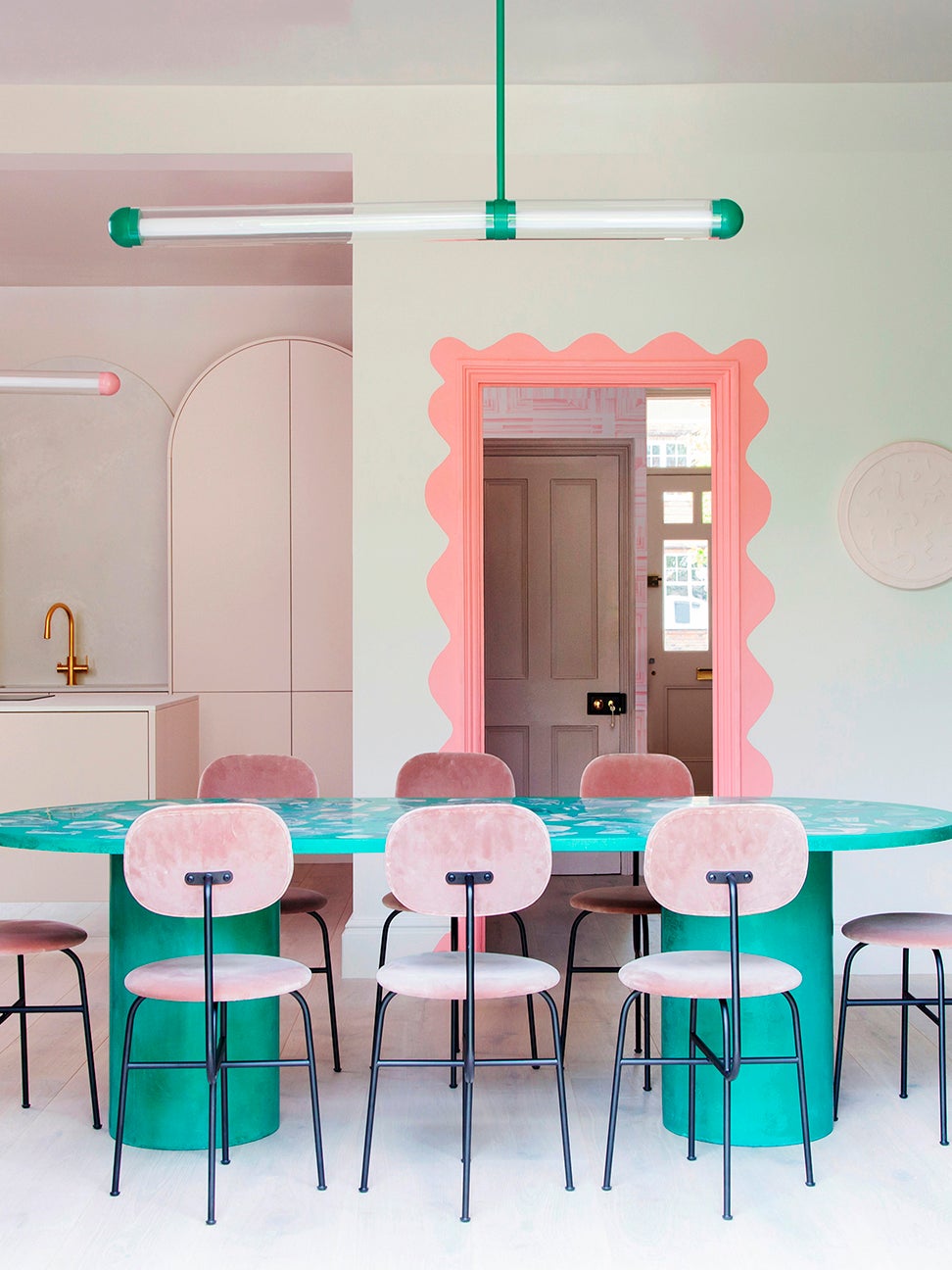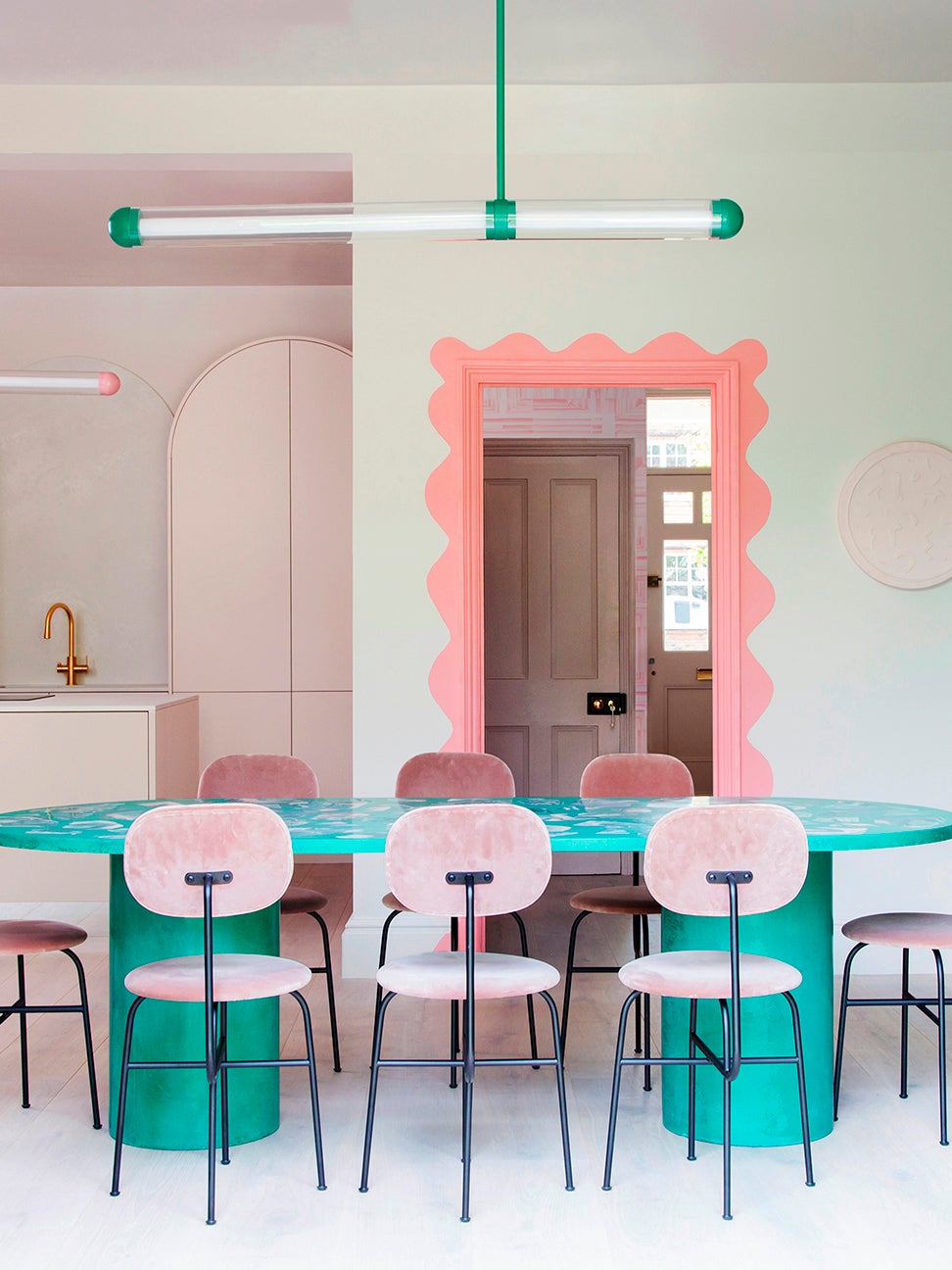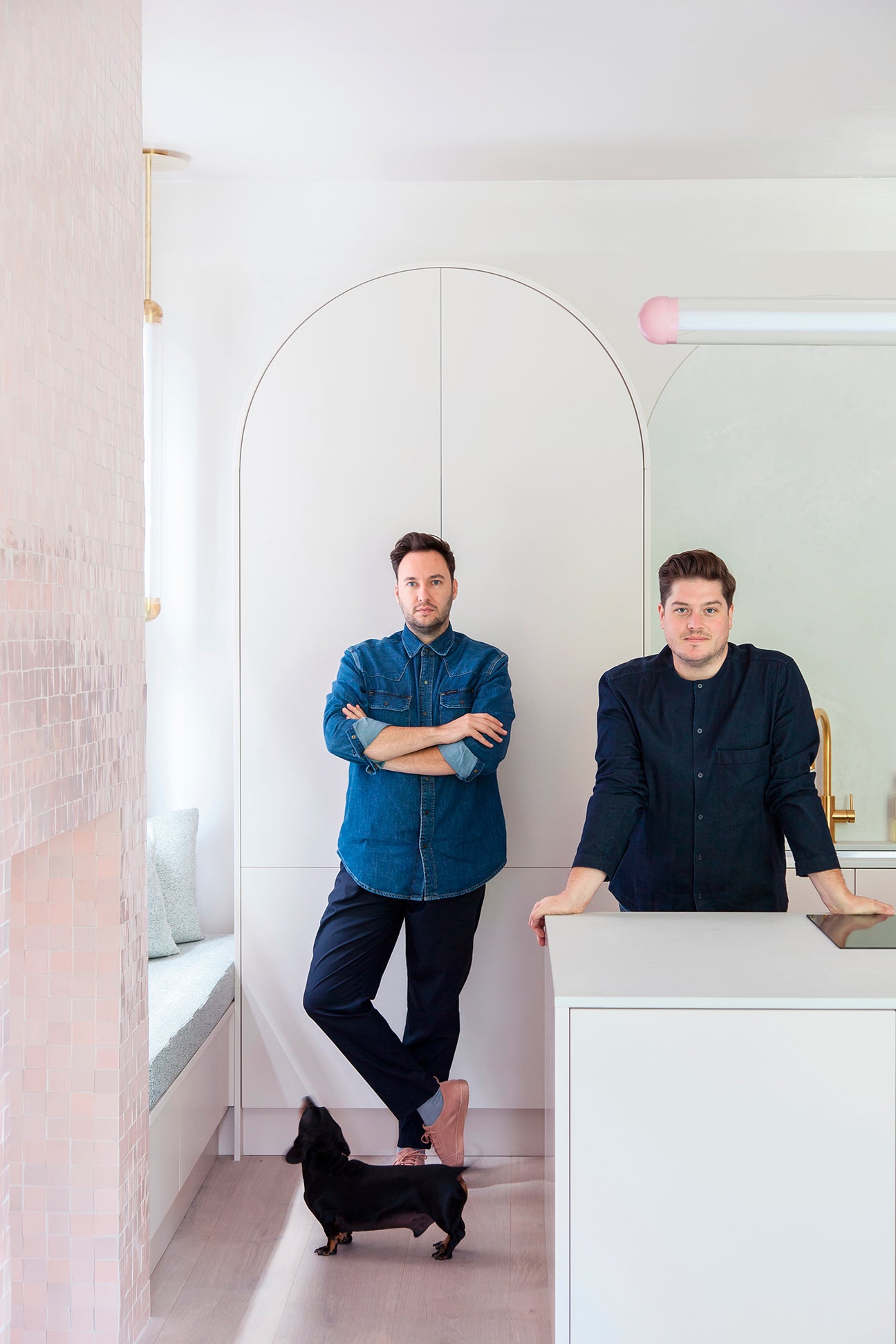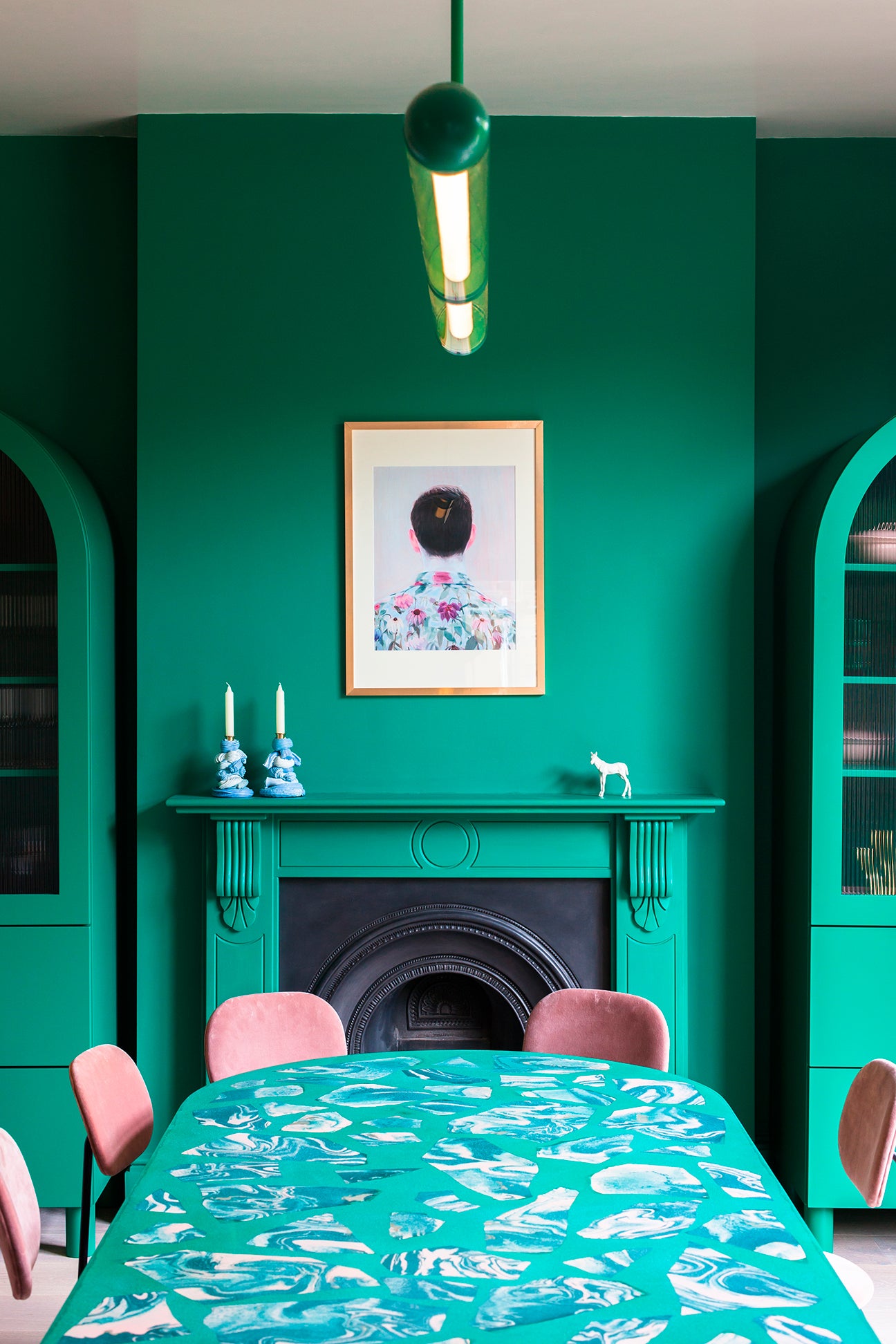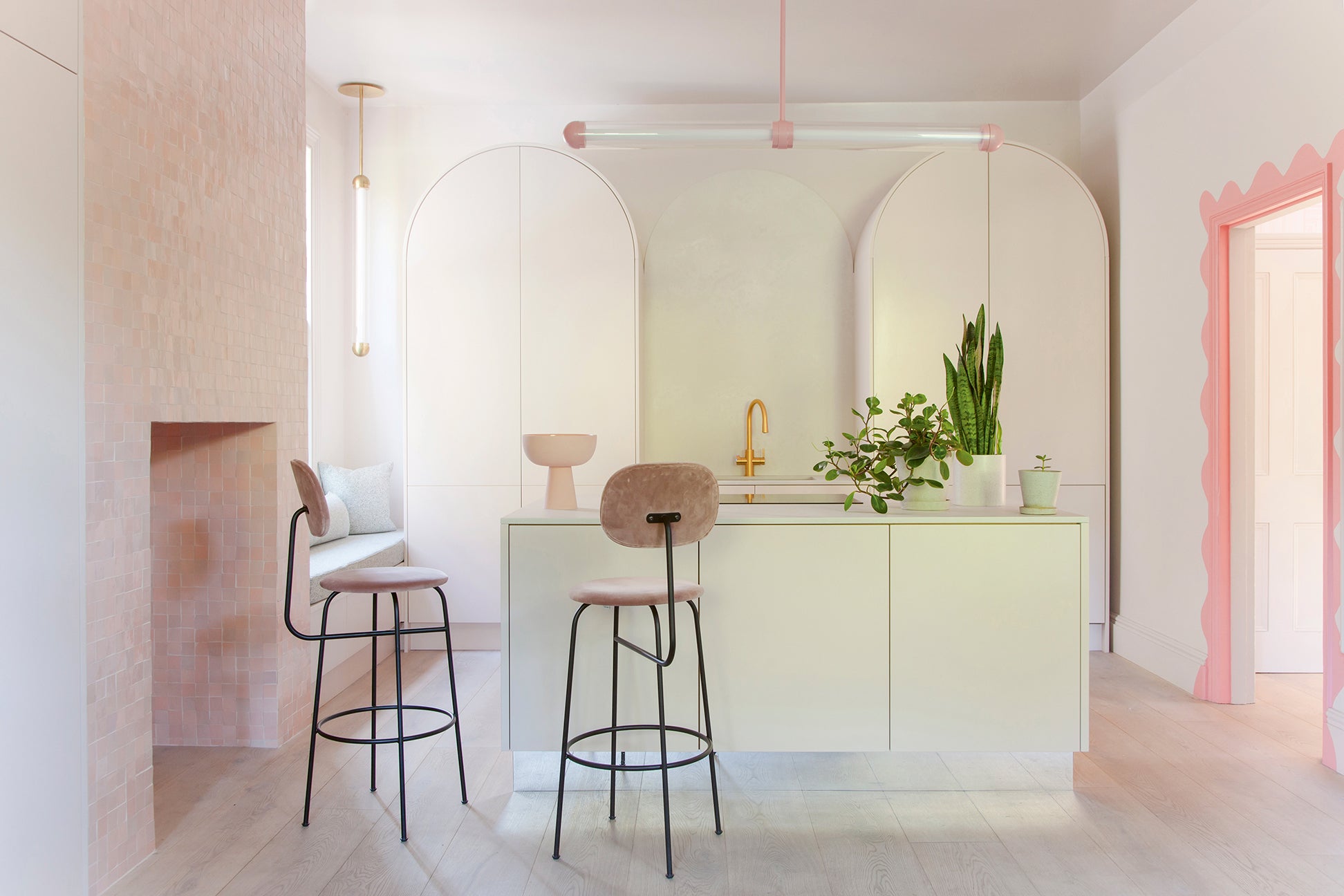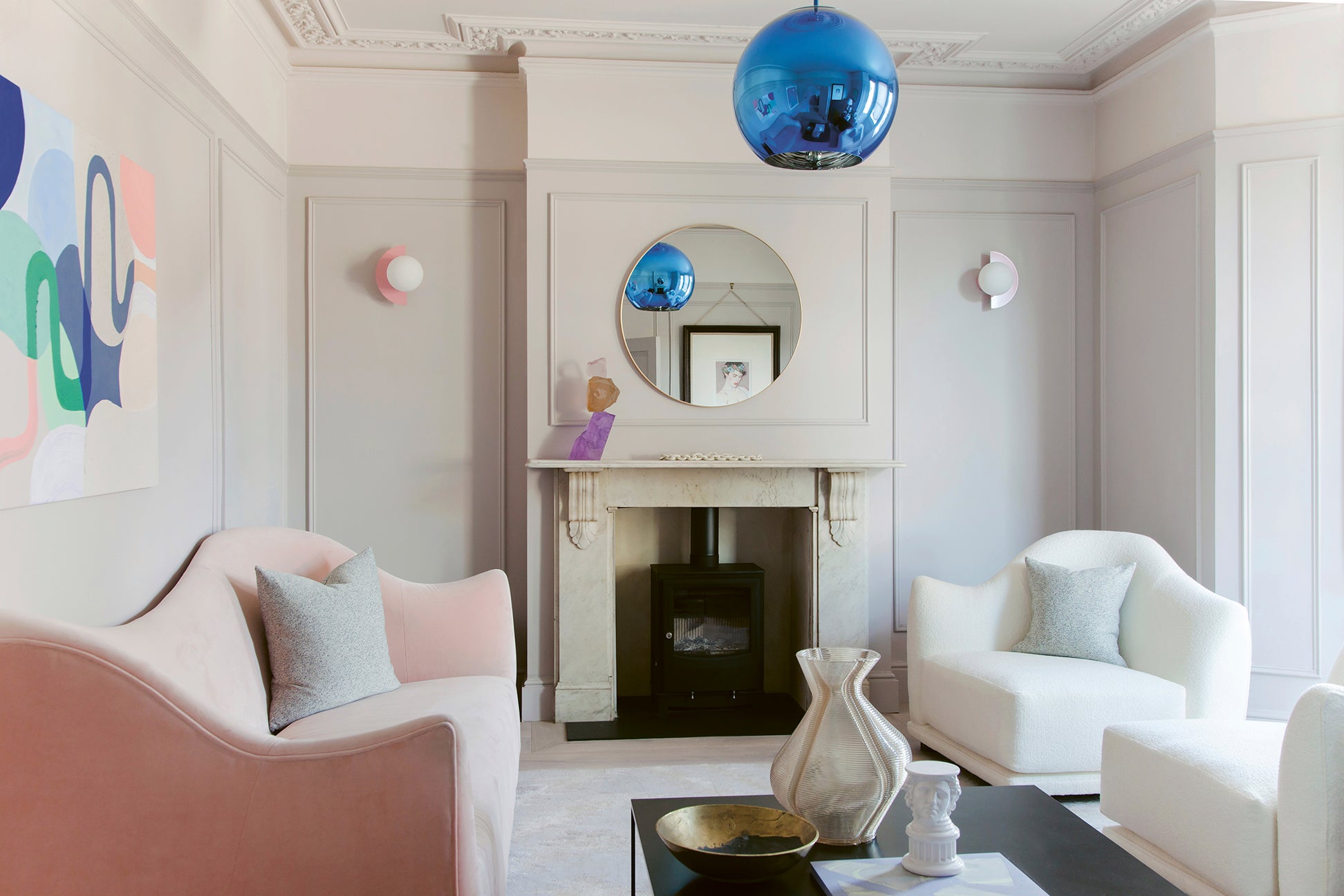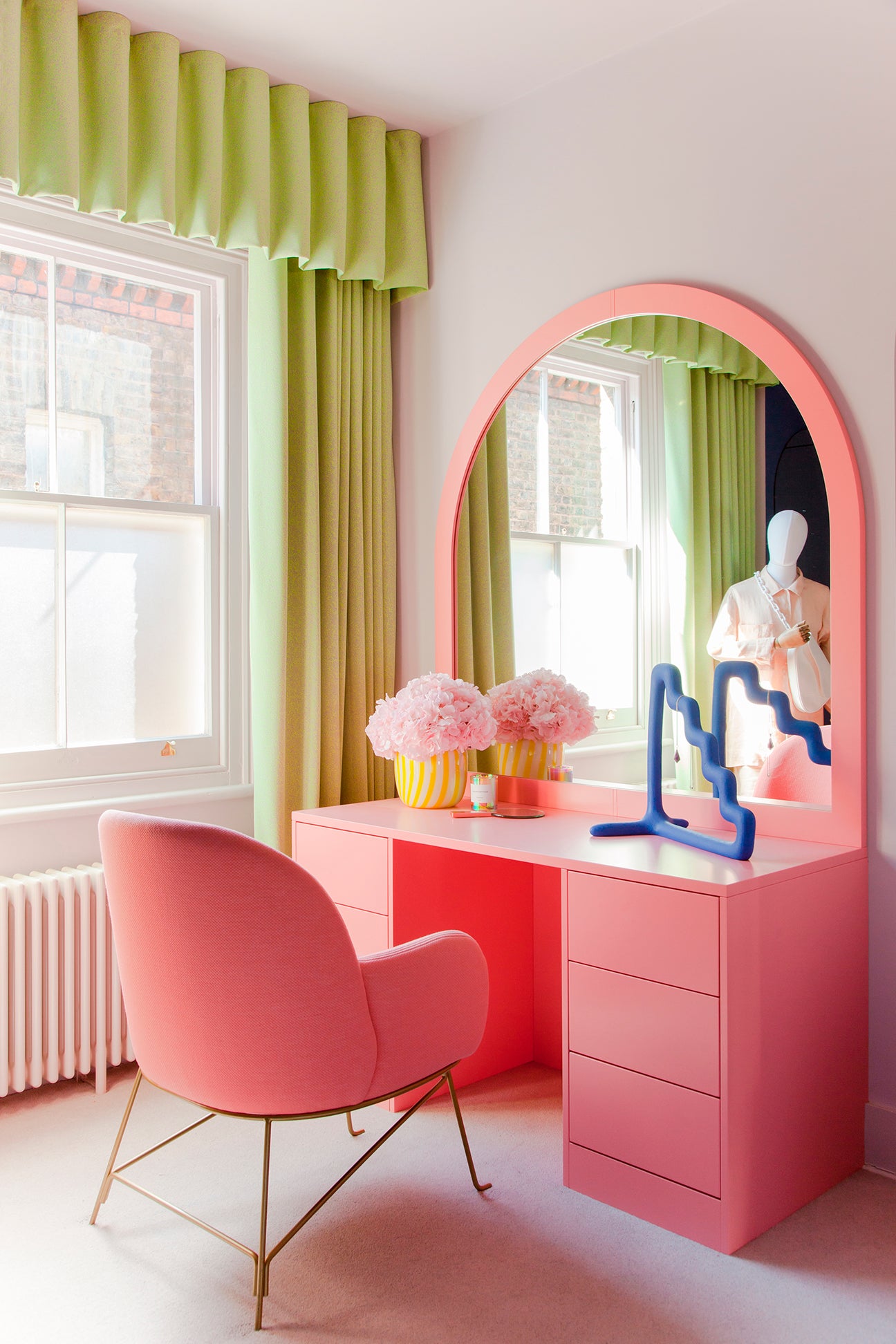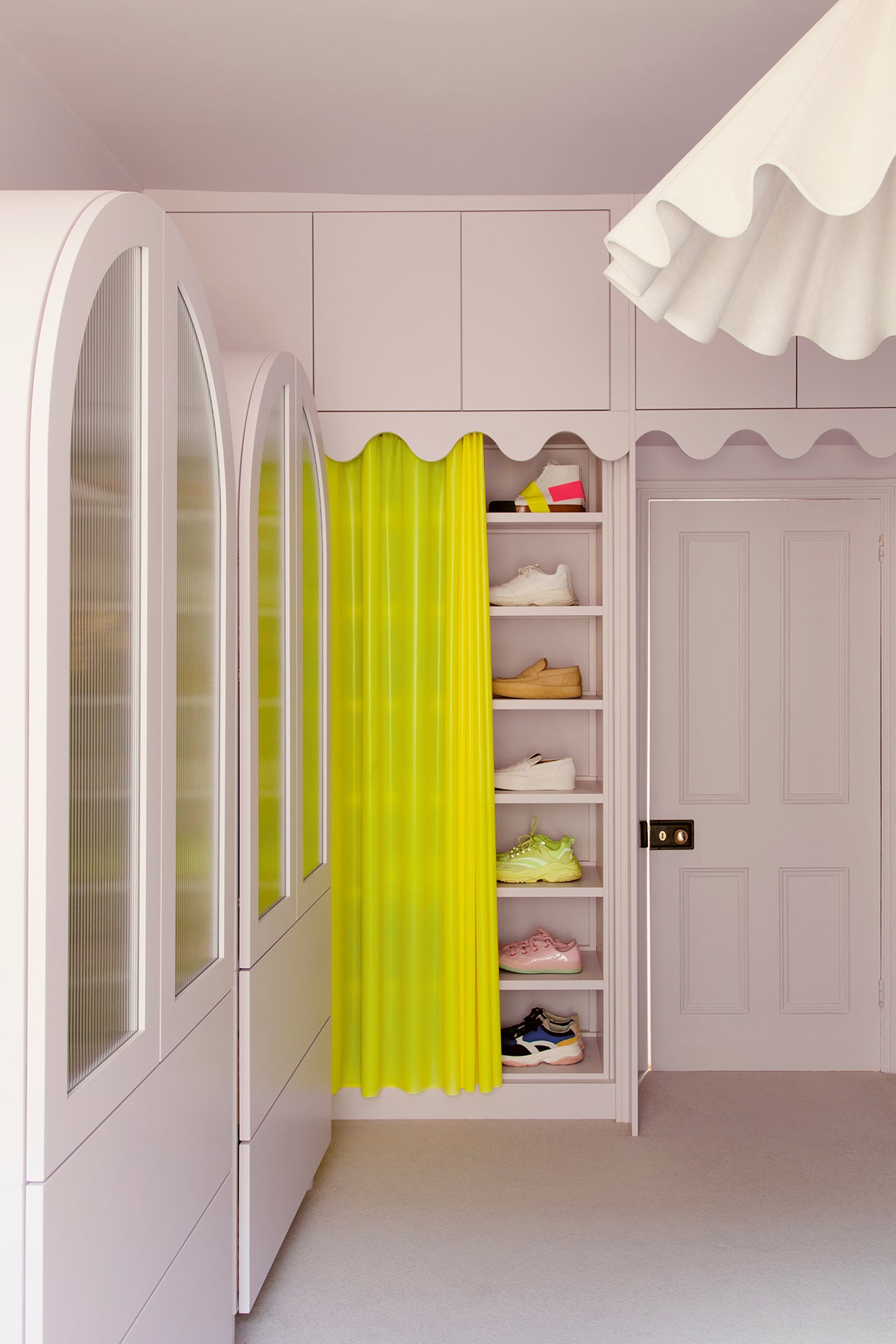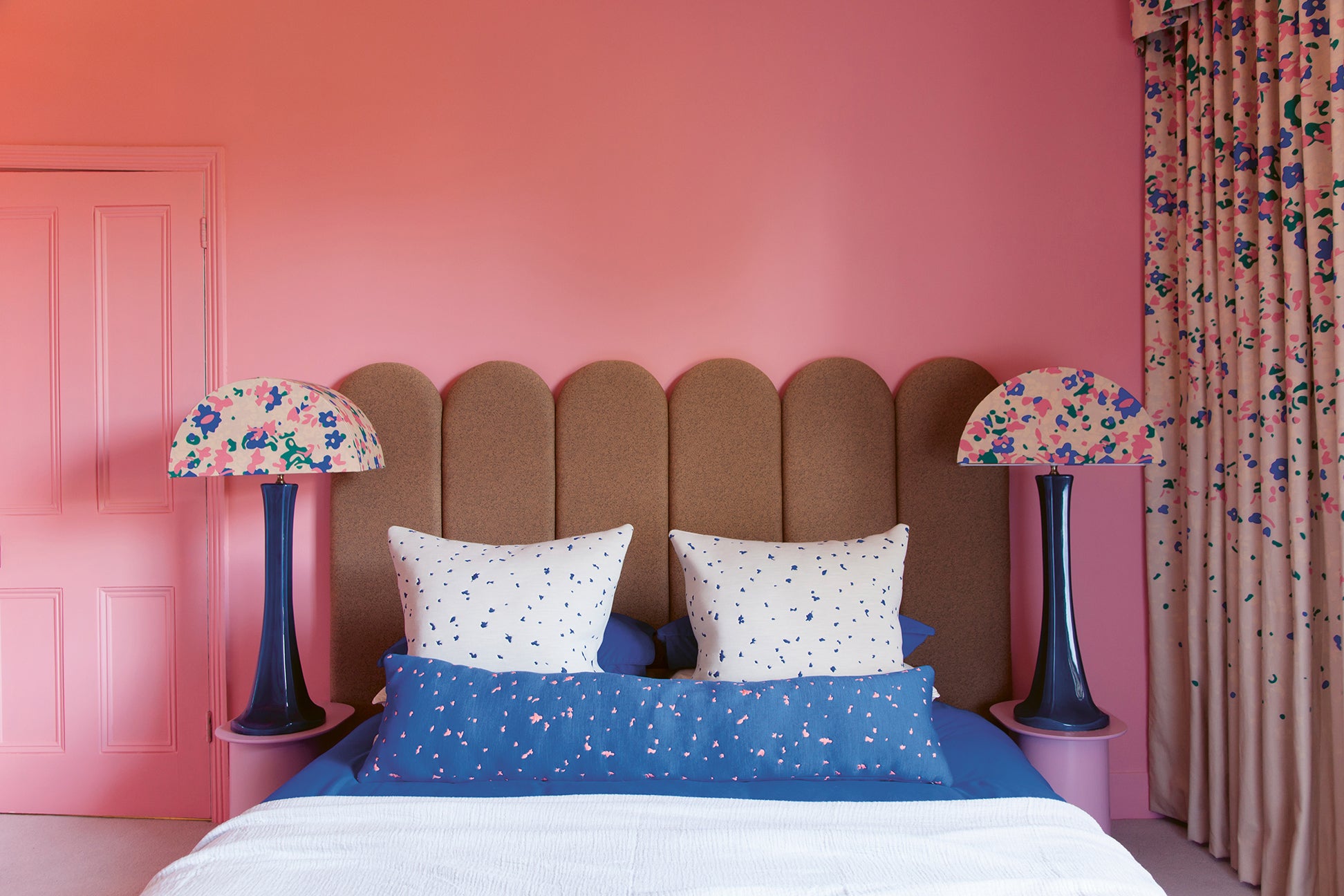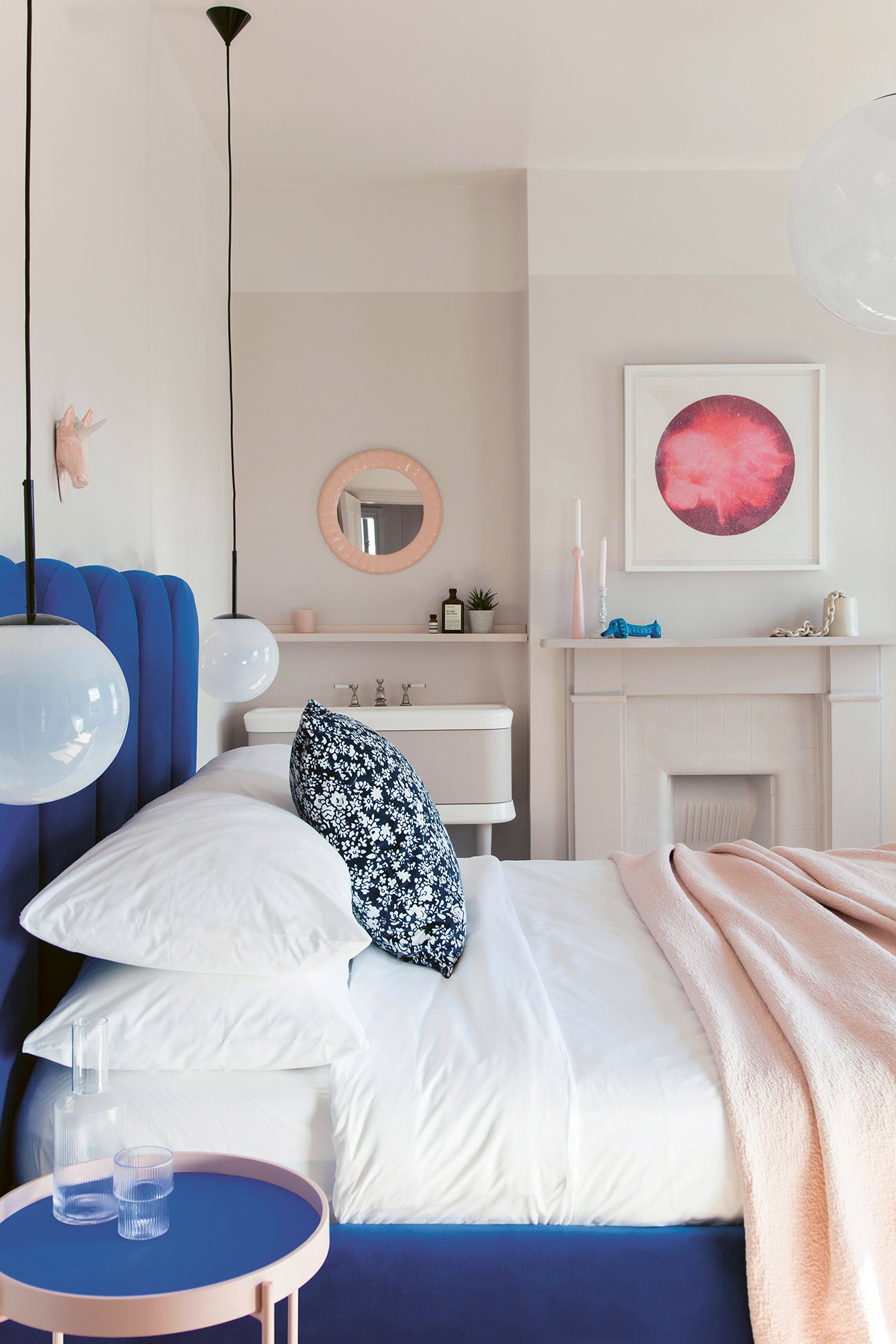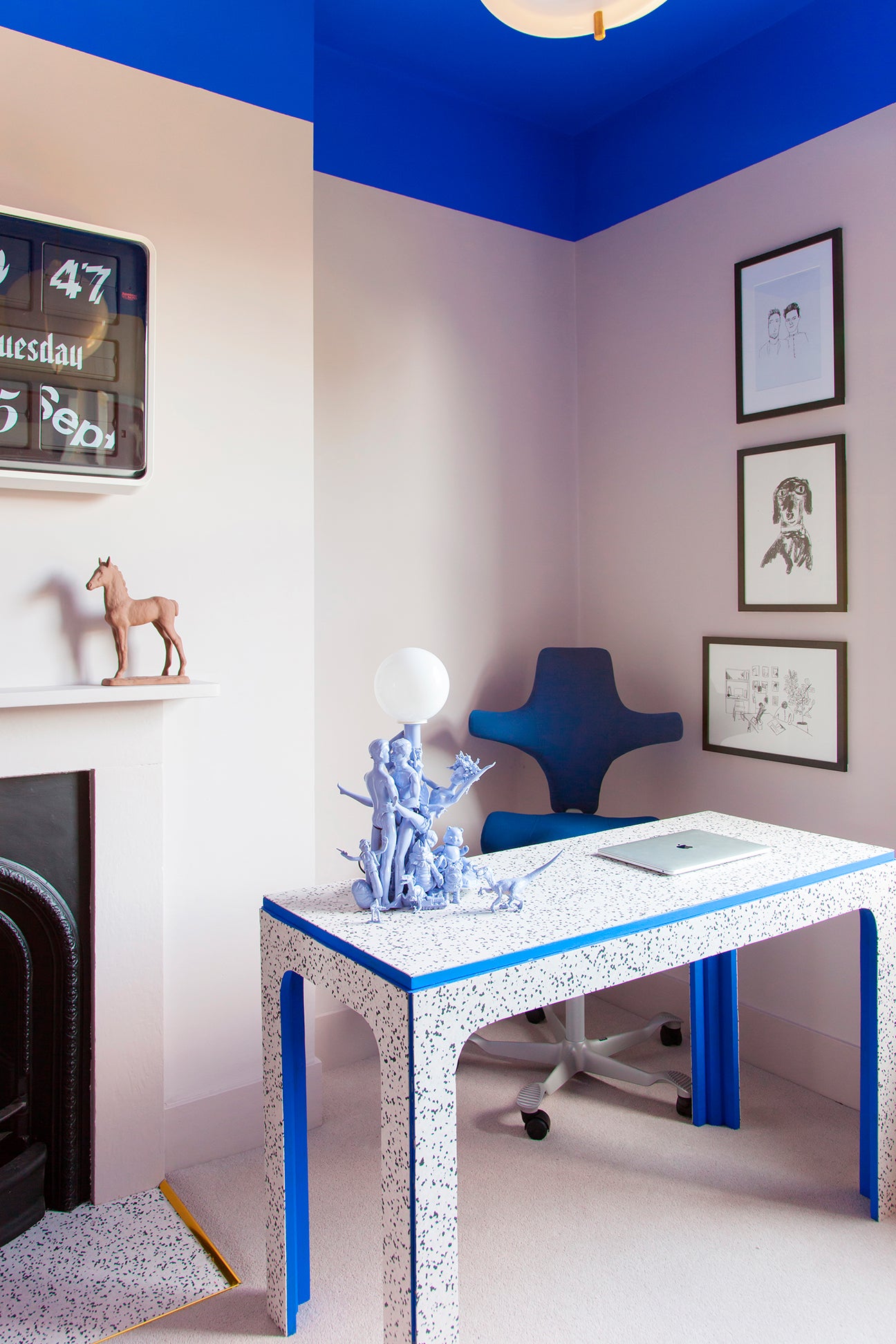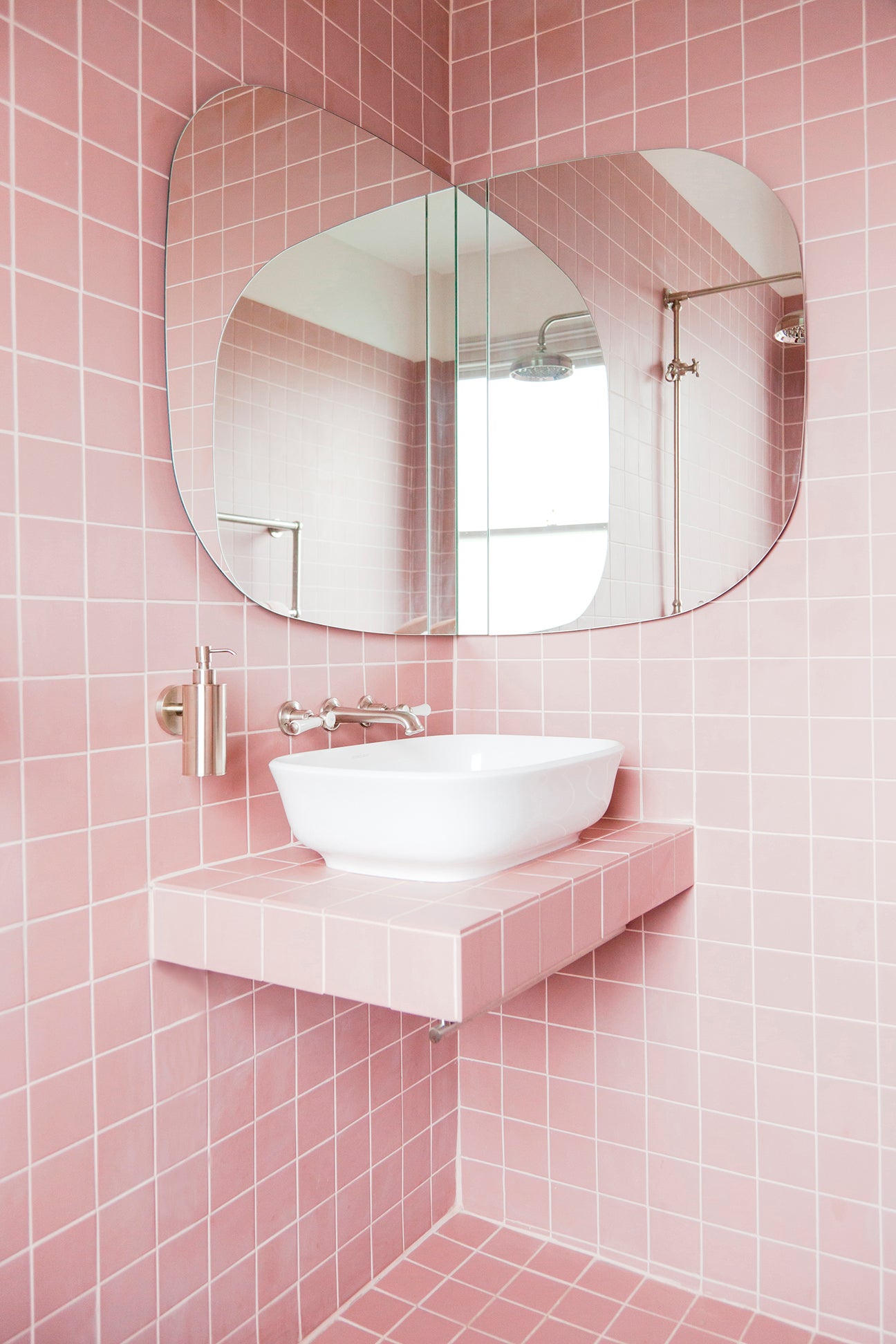We may earn revenue from the products available on this page and participate in affiliate programs.
On an otherwise typical Wednesday morning, Jordan Cluroe, one half of British design darling 2LG Studio, donned a bubblegum pink trenchcoat. That’s all it took for stranger after stranger to strike up a conversation. “Color can be quite revolutionary, can’t it?” muses Russell Whitehead, 2LG Studio’s other half. “It causes reactions in a world that can feel very lonely.”
The duo’s home, an 1870 detached Victorian in southeast London that they lovingly revived from a “virtually derelict” state over the course of five years, has a similar effect. “When people come through the door, the color instantly opens up their personalities because they’re so surprised,” says Whitehead (above right, with Cluroe). For them, the no-holds-barred palette was predestined: The hallway boasted pink walls and deep-green carpeting dating back to the ’50s. “We’re drawn to the power of color,” says Whitehead. “It has always brought positivity into our lives.”
Never formally trained in interior design (both started out as actors), the couple is happily unconstrained by rules. Any hue in any intensity in any combination is on the table. Malachite green on almost every surface—dining table, fireplace, not one but two cabinets—paired with squiggly coral doorframes? Done. Pepto-pink walls plus a camel headboard and pops of Yves Klein Blue and Kelly green? Even better. “It’s like creating an outfit for a space,” Cluroe explains.
Part coffee-table tome, part self-help book, this guide takes you through the emotional and practical sides of the often-intimidating (but always rewarding) process of decorating a space from scratch.
With Making Living Lovely, their debut book packed with advice both pragmatic (“Don’t forget your ceilings”) and therapeutic (“Comparison is the death of creativity”), they hope to instill this confidence in design lovers everywhere. Here, they share some of their wisdom.
Trust Your Gut
Vase, Dirk van der Kooij; Coffee Table, La Redoute; C.LAMP Wall Lamp, Swedish Ninja; Sculptures by Observatory Studio and Adam Nathaniel Furman, Adam Nathaniel Furman.
We change as people all the time, so it’s fine to want to mix things up in your interiors, too. The key is to tune in to what it is you love and need—the more you pay attention to your creative instincts, the louder they will shout. This room has gone through several incarnations, including a blue phase, but we always knew we eventually wanted to reinstate the original wood paneling and lay new floors.
Listen to Your Home
If you live in a 1930s semidetached house, don’t try to turn it into a fake 18th-century manor. The architect built it that way for a reason. Respect what you have, and some of the hard work is already done. The dressing room in our Victorian is a modern twist on period bones.
Tie It Together
When we talk about themes, we mean subtle connections not gimmicks. This shoe storage dream, a top priority for our renovation, features arched wardrobes and squiggle detailing on the cabinetry, a motif that occurs throughout our house. It’s a simple way to draw your eye into the space and create flow.
Get Ahead of the Curve
So many of the spaces people inhabit are angular, with strong lines and hard edges, so every now and then allow yourself to break it up. Curves offer a touch of the unexpected and bring organic shapes into your home. With roots in the Art Deco era, they’re a classic that keeps coming back.
Think of a Space Like a Perfume
Pillow in 2LG x Custhom Fabric, 2LG Studio; Sink, Victoria + Albert; Ripple Carafe Set, Ferm Living.
Your design may involve multiple layers, with each forming a base note (the underlying concept), middle note (the heart), and top note (the accents that grab attention). Try uniting those elements with a complementary color and have it reappear throughout your home. When your established palette is cohesive, a pop of neon, like in our closet, or neutral, as seen in the guest bedroom, is equally surprising.
Film, Television and Theatre 018 Paint, Mylands; Custom Desk, 2LG Studio; Lamp, Russell Whitehead; Håg 8106 Capisco Chair, OfficeChairsUSA.
Faucet, Victoria + Albert.
This story was originally published in our Spring 2020 issue with the headline “Living Lovely.”
The post This London Victorian’s Punchy Palette—Malachite! Bubblegum! Cobalt!—Was Predestined appeared first on domino.
